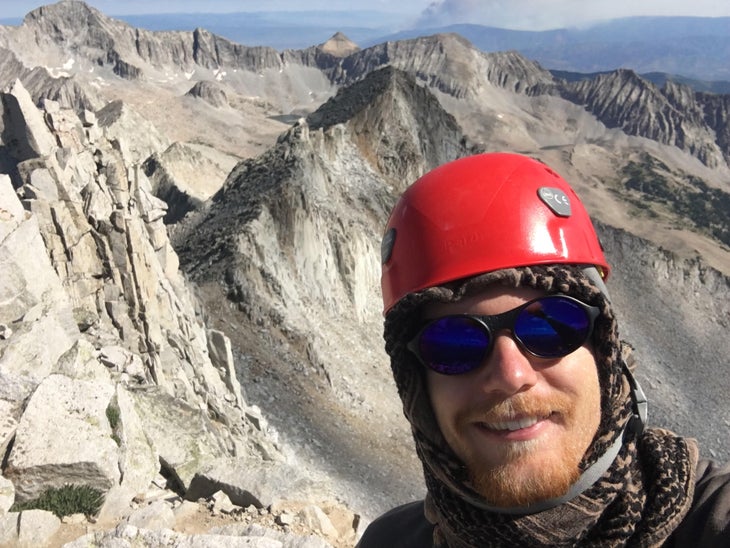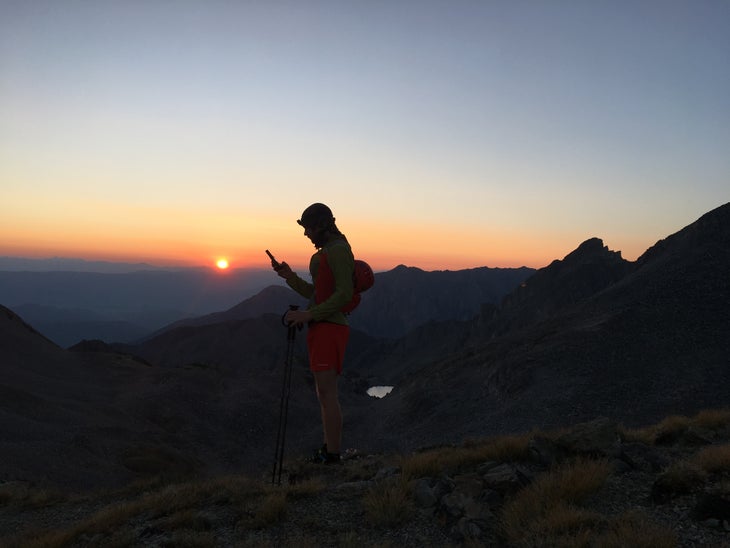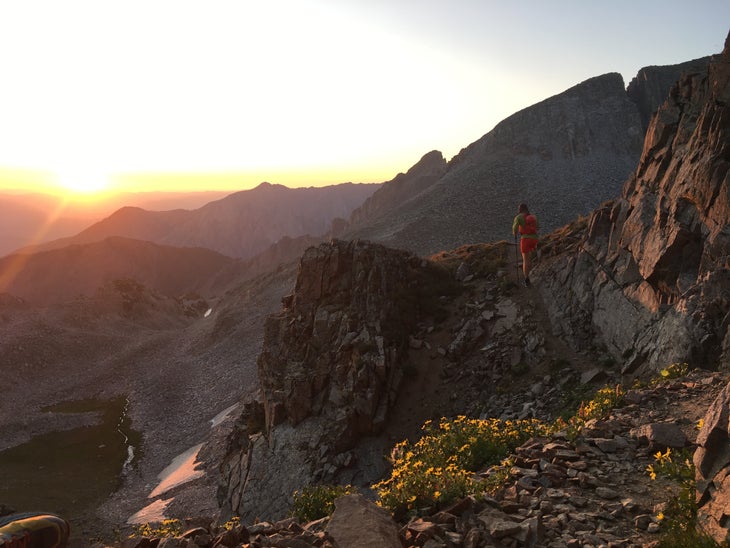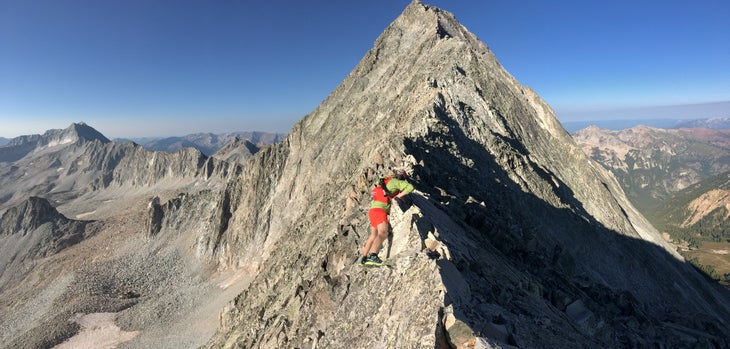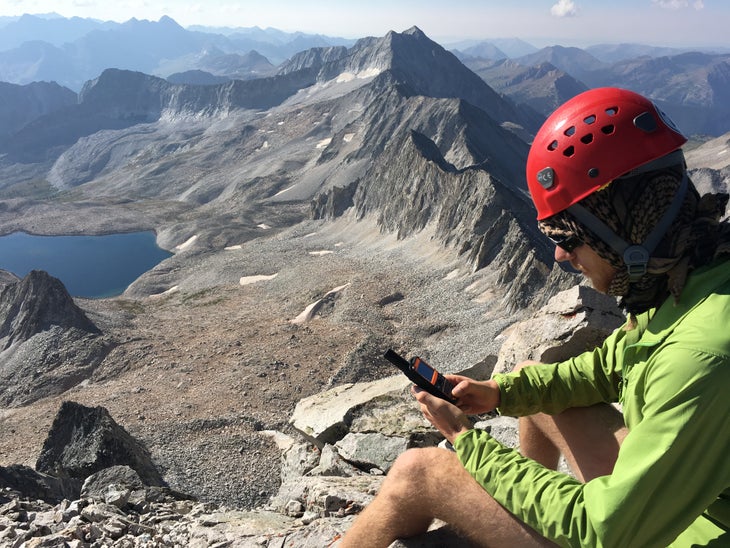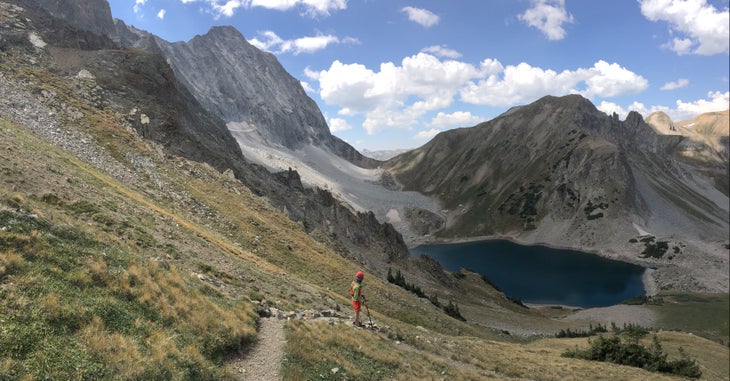New perk! Get after it with local recommendations just for you. Discover nearby events, routes out your door, and hidden gems when you sign up for the Local Running Drop.
WHY I USE THE SPOT X
Sponsored by SPOT
By Owen Clarke
The buddy system is indisputably one of the most time-honored rules of travel in the backcountry. Having someone route finding with you and watching your back can mean the difference between lost and found, and even life and death, if things go wrong.
Still, having a partner every time you head out into the backcountry isn’t always feasible. Thanks to new devices like the SPOT X, going solo doesn’t necessarily mean sacrificing a certain level of safety.
And, for someone like me with special physical limitations, the SPOT X is my frequent “buddy” and offers comforting peace of mind on mountain adventures.
For the past six years, I’ve struggled with an autoimmune neuromuscular disease of unknown origin. My symptoms involve chronic muscular and nerve pain throughout my body, as well as decreased circulation and a gradual loss of sensation in my extremities, among other things.
As an avid climber, hiker and outdoorsman, I experience a harder and harder time pursuing my passions, but do my best to get out in the backcountry regularly, hiking in the beautiful peaks of Colorado, where I live.
Due to its sporadic and unpredictable nature, my condition presents a problem when it comes to the buddy system, making it hard to warrant a partner. Who wants to plan a long day in the backcountry with someone, only to have to turn around a mile in when I flare up in pain? Therefore, the best option for me, oftentimes, is to travel alone, not weighing anyone else down, with the ability to turn around without a qualm if need be.
Traveling alone never will be as safe as traveling with a partner. There are simply too many variables that can’t be taken into account by a single individual. But the SPOT X has closed the safety margins between solo and group travel by an incredible amount.
Because it assigns you a personal number, your friends can message you back as well via email or text, with messages being sent to an inbox similar to a smartphone.
Last weekend, I decided to go out for a run and hike up Capitol Peak, in Colorado’s Elk Mountain Range, known as one of the toughest 14ers in the state. I’d been up Capitol before, so was familiar with the route. Previously I had made a two-day trip of it, but this time planned on getting an early start, leaving the trailhead around 3:30 a.m. for a one-day ascent.
On trips like this, my SPOT X satellite-messenger and locator device has become as much of an essential as food and water. The SPOT X is a lot more than a simple waypoint tracking device. It offers the all the messaging capabilities of a cellular phone, from essentially anywhere (save for maybe a cave or incredibly thick forest cover).
Because it assigns you a personal number, your friends can message you back as well via email or text, with messages being sent to an inbox similar to a smartphone. When going on long or ambitious days, particularly in exposed terrain like Capitol’s northeast ridge, I often use the SPOT to track my position via waypoints, which my friends can view from home to check my progress.
The intervals of these waypoints are customizable, as well. I normally set mine to update every hour, but they can be moved as close as two-and-a-half minutes apart.
Arriving at the trailhead at 3:15 a.m., I stretched on the rear bumper of my car in the moonlight. To the southwest, Capitol barely visible outline loomed a deeper black against the ebony of the sky. I strapped on my running vest and stowed my soft flasks, my breath freezing in the night air. Then I selected a preset message on my SPOT X in the dark, using the illuminated QWERTY keypad, to send to my roommate, Paul. “Heading out.”
I started on the Ditch Trail, which runs six miles up to Capitol Lake, at around 11,500 feet. Arriving at the lake around 5, I filled up my water while watching two headlamps bob up the switchbacks toward the Mount Daly saddle above. I pulled up the SPOT X and quickly sent a “Check-In” to Paul. These Check-In’s send a preset message to a preset contact, as well as a Google Maps link containing the SPOT X’s location. But all of this is arranged prior, so all it takes when out in the backcountry is the press of a button.
Mid-step, my foot came down on the rock sideways, folding my ankle and sending a flare of hot pain up my calf.
In all honesty, I don’t always like having the constant contact of the SPOT X. In some ways, it can make me feel like I’m using a crutch I don’t need. The thing is, though, that it leaves the tools in your hands. You can use it to its fullest potential, updating your social media feeds (yeah, I’m not kidding) or chatting with friends like you would texting on a cell phone. Or, instead, you can merely “Check-In” on occasion, or not at all, carrying it in your back pocket solely in case of an emergency.
The switchbacks up to the saddle were easy, but the talus field took ages to navigate, particularly with my footwork hampered by my numb feet. I was up to K2, a sub peak, in under an hour, then navigated the notorious knife-edge traverse and summited at by 9a.m. “Summit!” I messaged Paul. “Rad,” he shot back.
After returning back over Capitol’s knife-edge, I headed down from K2 and began navigating the talus field along the backside of the peak. As I headed towards the saddle below Mount Daly, leaping from rock to rock, I felt the muscles in my thigh spasm at random.
Mid-step, my foot came down on a rock sideways, folding my ankle and sending a flare of hot pain up my calf. After a minute or so, I realized it was only a minor sprain. Still, checking the clock on my SPOT X, I knew I definitely wouldn’t be getting to the trailhead by the anticipated 1 p.m. return time I’d set with Paul.
I had around eight predefined messages saved into my SPOT X, one of which read “Running a bit late. All good.” I clicked this and shot the preset message out to Paul. Then I relaxed, knowing that he wouldn’t be worrying about me.
I perched on a large boulder and rested for a moment, then gingerly began to pick my way over the talus and up to the saddle. I headed down to the lake, filled up with some water and made my way, at a glacial pace, back down the Ditch Trail toward the trailhead.
The SPOT X has helped me out in situations like this more times than I can count, but its most important function is one I luckily haven’t had to use. If a life-threatening emergency ever does occur, you can use the SOS button to send a beacon with the SPOT’s location to search-and-rescue services.
The device will also then put you in direct communication with the first responders. This is a function I hope to never use, but it’s a blessing to know that whatever happens, whatever goes wrong, the SPOT X has your back.

